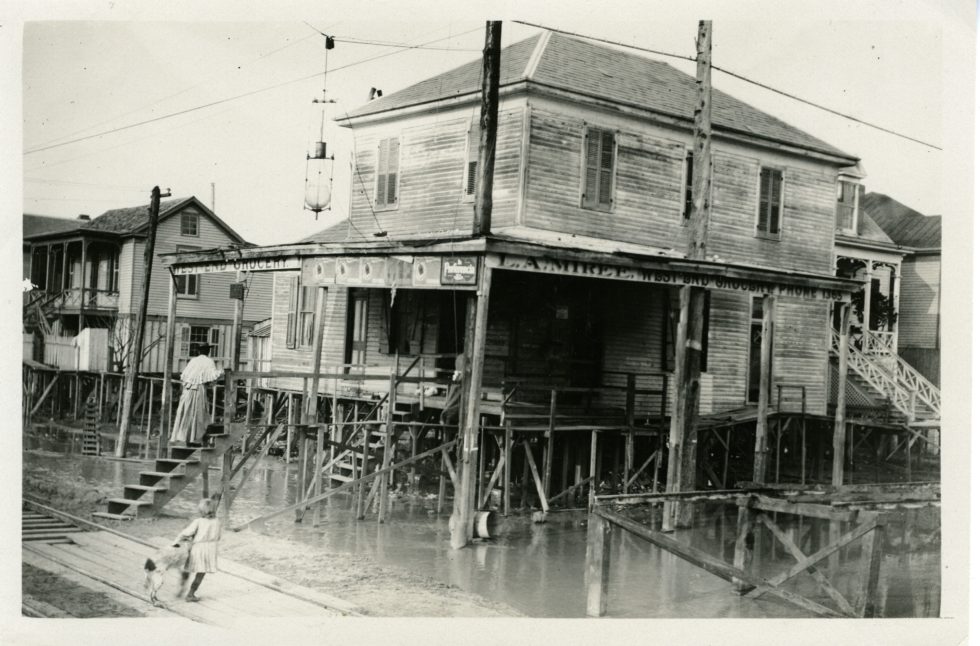
After the Seawall was completed, Galveston undertook the raising of the grade. The original elevation of that portion of Galveston Island probably averaged around five or six feet above mean low tide. Afterwards, the elevation varied from eight feet along the Bay side or waterfront, to about twenty-two feet at the Seawall or Gulf side. The expense was borne by the taxpayers and the individual property owners.
In order to complete the project, it was necessary to dredge a canal through the heart of the city. Residences within the limits of this canal were moved to each side and the material dredged from the canal was pumped toward the seawall where the heaviest filling was required. Hopper dredges then filled themselves with sand from between the jetties, steamed up the canal and discharged their load through a network of pipe lines. People continued to live in their raised houses during the time the filling process was going on, travelling to and from on boardwalks fastened to the top of fences.
When the filling was complete the canal was dammed at intervals and refilled. The houses that had been removed from the area of the canal were then moved back to the original site, all of the filled land was sodded, streets graded and paved, and street railway tracks relaid. The last area filled was completed in 1928.